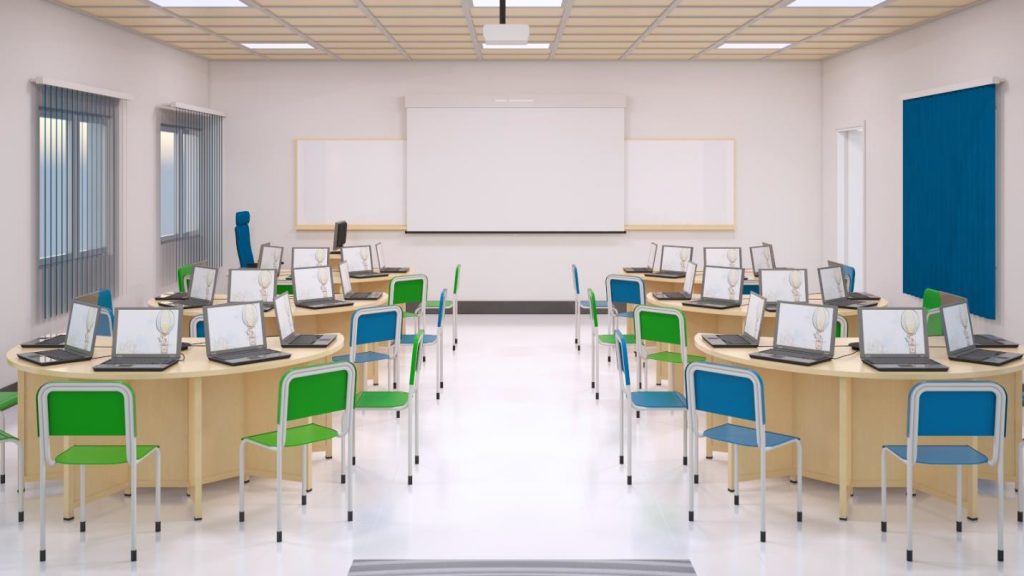
The face of education in India is transforming rapidly. From chalk-and-talk methods to dynamic smart classrooms, schools and institutions are embracing technology like never before. At the center of this evolution are Interactive Flat Panels (IFPs), which are turning traditional learning spaces into collaborative hubs of creativity, innovation, and engagement. This transformation isn’t accidental – it is being driven by Top Interactive Flat Panel Brands in India, which are leading the way in redefining how teachers teach and how students learn.
Why Interactive Flat Panels Are Changing the Game
Smart classrooms are no longer just a luxury; they’re becoming a necessity. With India’s vast student population and the push for digital education, IFPs are proving to be the bridge between conventional teaching and future-ready learning. Their appeal lies in their ability to:
- Display crystal-clear visuals that make abstract concepts tangible
- Enable multi-touch interactivity so multiple students can work simultaneously
- Support hybrid learning, connecting online and offline education seamlessly
- Provide long-term savings with durable design and minimal maintenance compared to projectors
- Empower teachers with easy access to apps, recordings, and real-time feedback tools
For schools, adopting IFPs means investing in smarter, more engaging, and more inclusive classrooms.
The Role of Brands in Shaping Smart Classrooms
Not all panels are the same, and that’s where brands play a crucial role. The best manufacturers understand that classrooms in India are diverse – ranging from elite urban schools to resource-limited rural setups. The innovation from Interactive Flat Panel Brands in India has allowed this technology to be scalable, adaptable, and relevant across different needs.
Here’s how leading brands are shaping education in India:
- Affordability & Accessibility: By offering panels at multiple price points, brands ensure even mid-sized schools can step into digital learning.
- Localization: Many brands design panels that support multiple Indian languages, making them more inclusive.
- Training Support: Teacher training programs bundled with the panels help educators maximize their use.
- Continuous Upgrades: Regular software updates and feature enhancements keep schools at the cutting edge.
This combination of technology, accessibility, and support ensures that IFP adoption isn’t limited to a select few but is spreading nationwide.
Features That Define the Best Panels in 2025
When schools evaluate IFPs, they often look for certain features that set top brands apart. Some of the most sought-after capabilities include:
- High-definition displays that provide clarity in any classroom environment
- Smooth multi-touch functionality enabling natural, chalkboard-like writing
- Cloud integration for sharing lessons and assignments instantly
- Seamless app compatibility for teaching tools and educational software
- Robust durability to withstand heavy classroom usage
- Energy efficiency that makes them eco-friendly and cost-effective
These features don’t just make teaching easier – they make learning far more interactive, enjoyable, and lasting.
How Panels are Redefining Teacher and Student Roles
One of the most exciting aspects of IFPs is how they shift dynamics in the classroom. Traditionally, teachers delivered lectures while students listened passively. Now, with IFPs:
- Teachers become facilitators, guiding students in hands-on exploration.
- Students evolve into active participants, solving problems collaboratively on a shared screen.
- Learning becomes personalized, as lessons can be adapted to different speeds and styles.
- The classroom turns into a two-way communication space, where interaction is encouraged, not suppressed.
This redefinition of roles ensures that classrooms are no longer about memorization – they’re about creativity, critical thinking, and collaboration.
Smart Classrooms Beyond Schools
While K-12 education is the main driver of demand, IFPs are also shaping learning beyond schools. Their versatility allows them to thrive in:
- Universities where advanced lessons in engineering, medicine, or business need interactive simulations
- Coaching institutes delivering competitive exam prep with real-time quizzes and analytics
- Corporate training rooms where presentations and brainstorming sessions become highly collaborative
By crossing into higher education and professional spaces, these panels prove that they’re not just about classrooms – they’re about lifelong learning.
Emotional Impact of Interactive Flat Panels
Technology alone cannot transform education; it’s the emotional experience it creates that drives real change. IFPs do exactly that by:
- Boosting student confidence when they engage directly with lessons
- Giving teachers a sense of empowerment as they deliver more impactful, interactive sessions
- Reassuring parents that their children are being taught in modern, globally competitive ways
This emotional buy-in ensures that panels aren’t seen as gadgets but as partners in education.
Challenges That Still Remain
The journey, however, is not without obstacles. Some of the main challenges include:
- Cost barriers for smaller institutions in rural regions
- Infrastructure limitations like unreliable internet and power supply
- Training gaps where teachers may hesitate to adopt new technology
These challenges require collaborative solutions such as:
- Subsidies and government initiatives for equitable access
- Public-private partnerships to improve rural infrastructure
- Continuous professional development programs for educators
Overcoming these challenges is key to ensuring that smart classrooms become the norm, not the exception.
The Future of Smart Classrooms in India
Looking ahead, IFPs are set to become even more advanced. We can expect:
- AI-powered panels that adapt content in real-time based on student progress
- Virtual and augmented reality integration for immersive subject exploration
- Global connectivity, linking Indian classrooms to peers worldwide
- Cloud-first ecosystems making education truly boundaryless
These innovations promise not just incremental improvements but a revolution in education delivery.
Conclusion
The rise of smart classrooms in India is one of the most exciting transformations in modern education. What makes it possible is the innovation, adaptability, and vision of Top Interactive Flat Panel Brands in India. They are ensuring that learning in 2025 is not just about knowledge transfer but about building creativity, collaboration, and confidence in every student. As classrooms across India embrace this shift, one thing is certain: Interactive Flat Panels are not just tools – they are the future of education itself.






